How Long Did It Take to Start Skating Again After Acl Reconstruction
Get full access to Outside Learn, our online education hub featuring in-depth fitness, nutrition, and adventure courses and more than 2,000 instructional videos when you sign up for Outside+ Sign up for Outside+ today.
So, you've blown your ACL. My sincere condolences. Been there, done that, got the T-Shirt—three of them. I know how you're feeling right now: depressed, scared, anxious, and looking for answers.
The short answer: Yes, you can absolutely come back from this. I'm not a doctor or a physical therapist, so I can't give you the all-encompassing, evidence-based answers you're looking for. But I have been through three ACL reconstructions and can shed some light on what an ACL injury recovery timeline looks like—at least, in my experience.
ACL recovery varies from person to person, and the timeline can look very different depending on the severity of your injury, your level of fitness, your dedication to the rehab routine, etc. My third ACL recovery ended up taking the longest because it was a re-tear of a previously reconstructed ACL and also included recovering from a torn meniscus, which set me back about six weeks compared to my previous ACL recoveries.
Watch: What is ACL Surgery?
Related: U.S. Downhiller Breezy Johnson Sustains Second Knee Injury
But judging from your Google search history (and my own experience of desperately searching for answers on the web in the aftermath of my injuries), you'll take whatever morsels of information you can get right now. So, in hopes of showing you the light at the end of the tunnel, here's what my most recent ACL injury and recovery timeline looked like.
Pre-ACL-Surgery Timeline
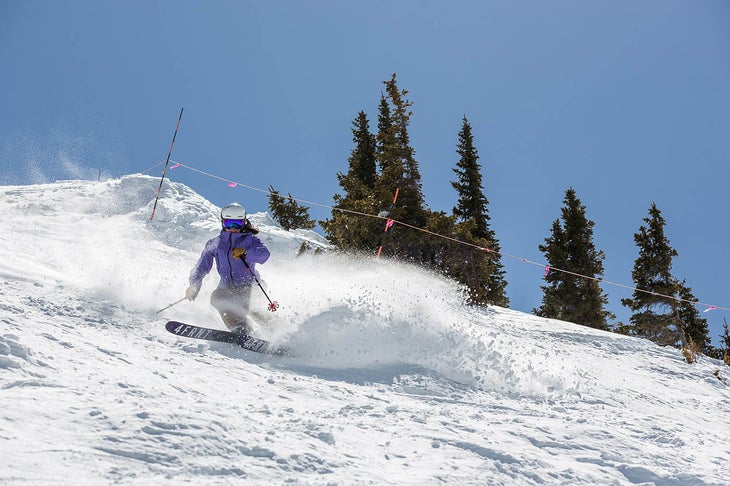
March 6, 2019: Tore my left ACL in a (stupid) skiing accident. Did not seek immediate medical attention because I knew the ACL was torn. Made an appointment with an orthopedic specialist who would perform the Lachman Test to determine whether the ACL was torn. If the orthopedic doc couldn't determine whether the ligament was torn from the Lachman Test, they would order an MRI.
Related: Skiing and Your ACL
March 8: Orthopedic surgeon could not determine whether the ACL was torn via the Lachman Test and ordered and MRI. Swelling in my left knee had mostly subsided and I was able to walk without issue, but the left knee would periodically give out.
March 15: MRI confirmed that I sustained a complete re-tear of my ACL (reconstructed using a patellar tendon graft in 2012), and a complex tear in the posterior horn of the lateral meniscus of my left knee. Decided to undergo ACL reconstructive surgery No. 3 using a patellar tendon graft from my right knee (couldn't use the patellar tendon from the injured left knee because that tendon had already been tapped for my 2012 reconstruction, and apparently, you can't double-dip). Also decided to have the meniscus surgically repaired, because, while some meniscus tears can heal on their own, my complex tear was unlikely to do so.
March-May: Decided on a surgery date. Skiers who tear their ACL and opt to have reconstructive surgery have some quick mental math to do.
I knew that if I had surgery in April, I'd likely be able to ski as soon as the lifts started spinning again. But I decided to delay knee surgery until the end of May for a couple of reasons. First, I had already planned a trip to Europe and didn't want to be on crutches for that. Second, in my experience, recovery from ACL surgery has gone much smoother and faster the fitter and stronger I am going into surgery. I could still hike, run, and mountain bike with a torn ACL (in-line activities like these don't require the stabilizing function of the ACL), and continuing to do these activities can actually help speed up your recovery after ACL surgery because your muscles, ligaments, and tendons are strong going into the surgery.
Pro tip: Make sure you're going into ACL surgery at the top of your game by visiting a physical therapist and setting up a pre- and post-ACL surgery game plan. Your orthopedic surgeon will want you to be in physical therapy two to three times per week for the first several weeks following surgery.
Post-ACL Surgery Timeline
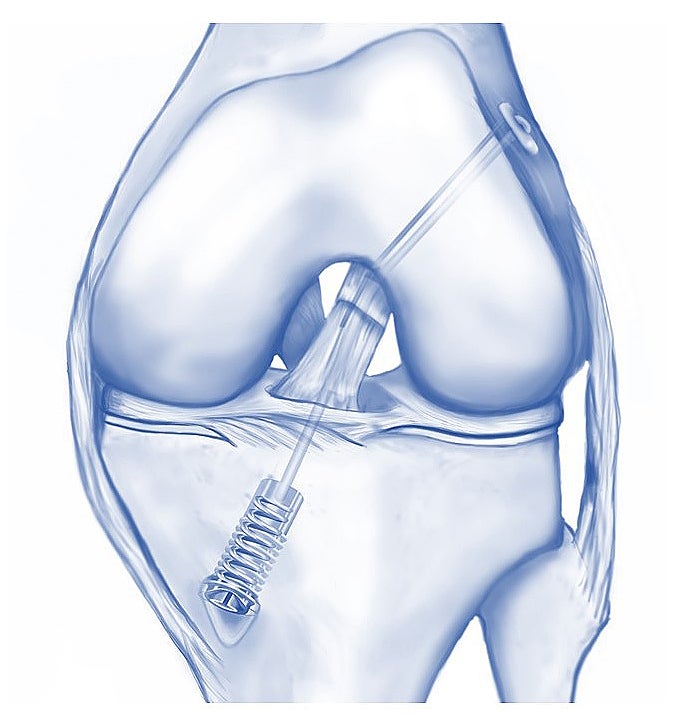
Week 0: ACL Reconstructive Surgery
May 29, 2019: Underwent surgery to repair the ACL and meniscus in my left knee at the Steadman Clinic in Vail, Colo. It was a two-for-one surgery: The surgeon, Dr. Provencher, first operated on my right knee to harvest the patellar tendon graft, then used that in the left knee ACL reconstruction. When I awoke from the four-hour surgery, a physical therapist worked with me to ensure I could walk with the help of crutches, bearing weight on only my right foot. I would not be allowed to bear any weight on my left leg for six weeks in order to let the repaired meniscus heal. After this consultation with a PT and my surgeon, I was discharged from the surgery center, feeling a lot like Lindsey Vonn after her latest knee surgery.
Note: If you only have an ACL repaired (no other ligament or tendon damage), chances are your doc will want you up and walking around with the help of crutches almost immediately. You may be told to only put partial weight on your affected leg for the first day or two, but after that you should be walking around with the help of two or even just one crutch.
Week 1: Ice, Rest, Straight Leg Raises, and ROM Work
Hobbling around with the help of two crutches, bearing weight only on my right leg. Wearing a full-leg brace on the left leg that was locked out to prevent my knee from bending or hyperextending while moving around. Started PT the day after surgery.
Goals of the first week of post-op:
- Ice, rest, and elevate knee as much as possible to combat swelling
- Work on quad muscle contractions and straight-leg raises; knee surgery inevitably causes trauma in the leg muscles and you may struggle to get your quad muscles to do anything in the first few days after surgery
- Work on knee range of motion (ROM): therapist prescribed exercises to work on bending and extending both knees
Week 2: Floor/Mat Exercises
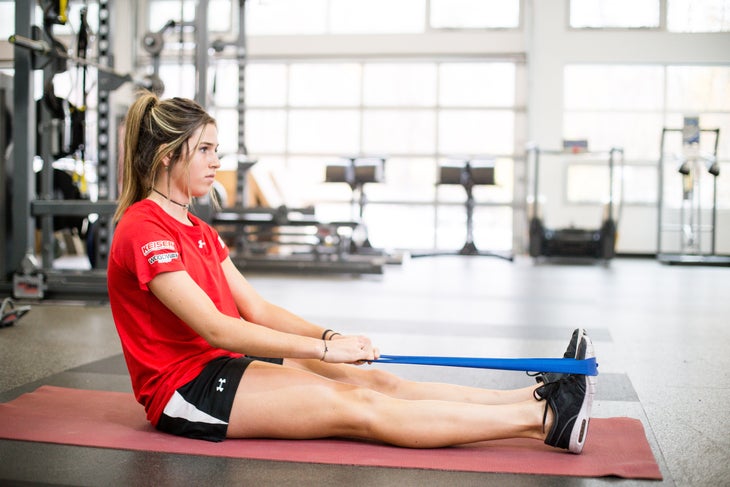
Able to perform straight-leg raise without any lag; able to bend left leg to 90 degrees. Working on the following PT exercises:
- Quad contractions
- Straight-leg raises
- Flexion and extension exercises with resistance bands and fitness ball
- Side planks
- Glute/hip bridge (because of my healing meniscus, I still wasn't allowed to bear weight on my left leg, so turned this exercise into a single leg version)
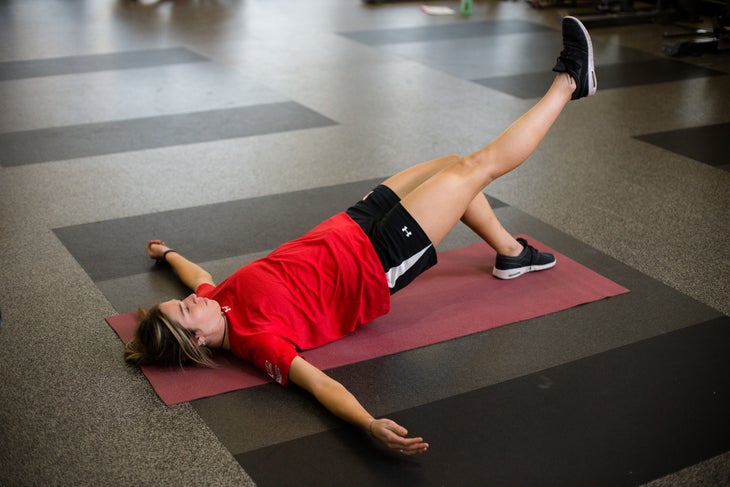
Note: If you don't have weight-bearing limitations, you may be able to ditch your crutch(es) altogether in Week 2 or 3 and start to practice walking with a normal gait.
Week 4: Stationary Biking
Started biking on a stationary bike without resistance; didn't have the ROM to bend the left knee enough to peddle a full rotation, so started working on three-quarter rotations.
Week 5: Weight Bearing
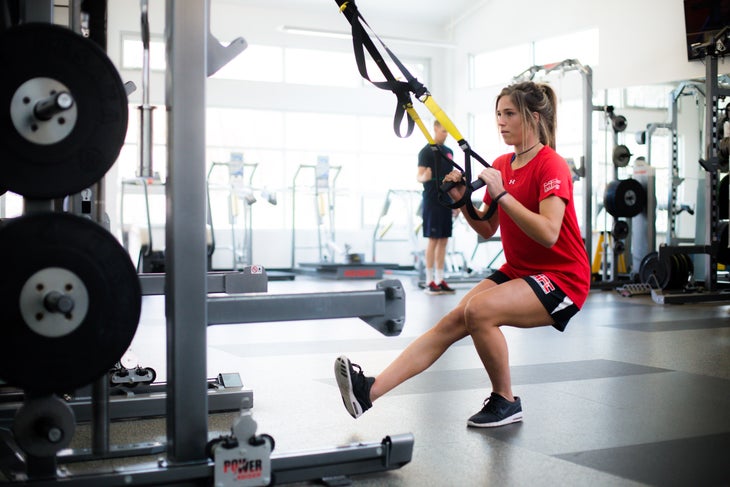
Began weight bearing as tolerated on left leg (down to one crutch). Able to bend knee past 90 degrees. Able to spin full rotations on stationary bike. Started working on lower body strength and balance exercises in PT.
Week 6-7: Walking
Ditched the crutches and started working my way up to walking one mile per day. Still working on lower body strength and balance exercises in PT, including stepping up and down stairs.
Week 8: Outdoor Biking
Started biking outdoors on flat surfaces for up to 30 minutes per day. Avoided any hills that would impose added resistance.
Week 12: Hiking
Able to bend knee to 120 degrees, walking with a normal gait, and able to step normally up and down stairs. Started hiking with knee brace on moderate trails.
Week 16: Jogging
Started walking/jogging intervals on flat surfaces outdoors and on treadmill.
Week 17: Mountain Biking
Started mountain biking on easy trails with no technical features and limited elevation gain/drop. PT exercises progressed from static to dynamic exercises, e.g. hopping, side shuffling, etc.
Week 24: Return to Sport Test
At six months post-op, Dr. Provencher ordered a return to sports test to determine how close I was to being able to return to skiing. This standardized test measures how strong and quick you are, and determines any deficiencies between the injured and healthy leg.
My test revealed that my left leg was still weaker than the right, so I wasn't quite ready to return to skiing. Continued with physical therapy and training to increase strength and power in the left quad, calf, hamstring, glutes, and hip complex to combat deficiencies.
Week 28: Skiing!
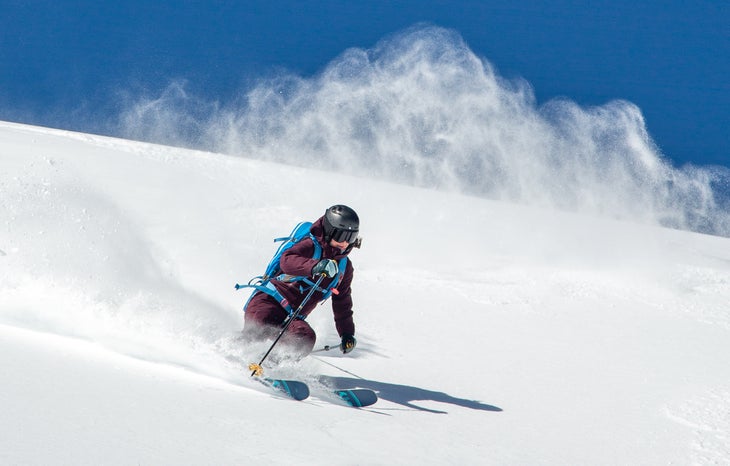
Started skiing half days on groomers while wearing a knee brace. Left knee felt strong, though it tired quickly and ached after a few hours. It would take another couple of weeks to gain back the strength and confidence I felt skiing pre-ACL surgery.
The knee protocol Dr. Provencher prescribed following this third ACL tear was somewhat conservative because we were dealing with a previously reconstructed knee, forcing me to work more slowly towards important functionality benchmarks compared to my previous ACL rehab routines. In the end, it took me about seven months from the date of ACL reconstructive surgery to get back on snow, and about eight months to get to a point where I could comfortably and confidently ski multiple days in a row at my pre-ACL-tear level.
The recovery wasn't all smooth sailing—I hit some hurdles like patellar tendonitis, a common side effect of using a patellar tendon graft, in my right knee which slowed down my strength-building process.
Want more skiing fitness and injury prevention tips?Register for SKI Magazine and AIM AdventureU's Ski Injury Prevention course to unlock an eight-week training plan for improved strength, mobility, and form.
Source: https://www.skimag.com/performance/acl-recovery-for-skiers/
0 Response to "How Long Did It Take to Start Skating Again After Acl Reconstruction"
Post a Comment